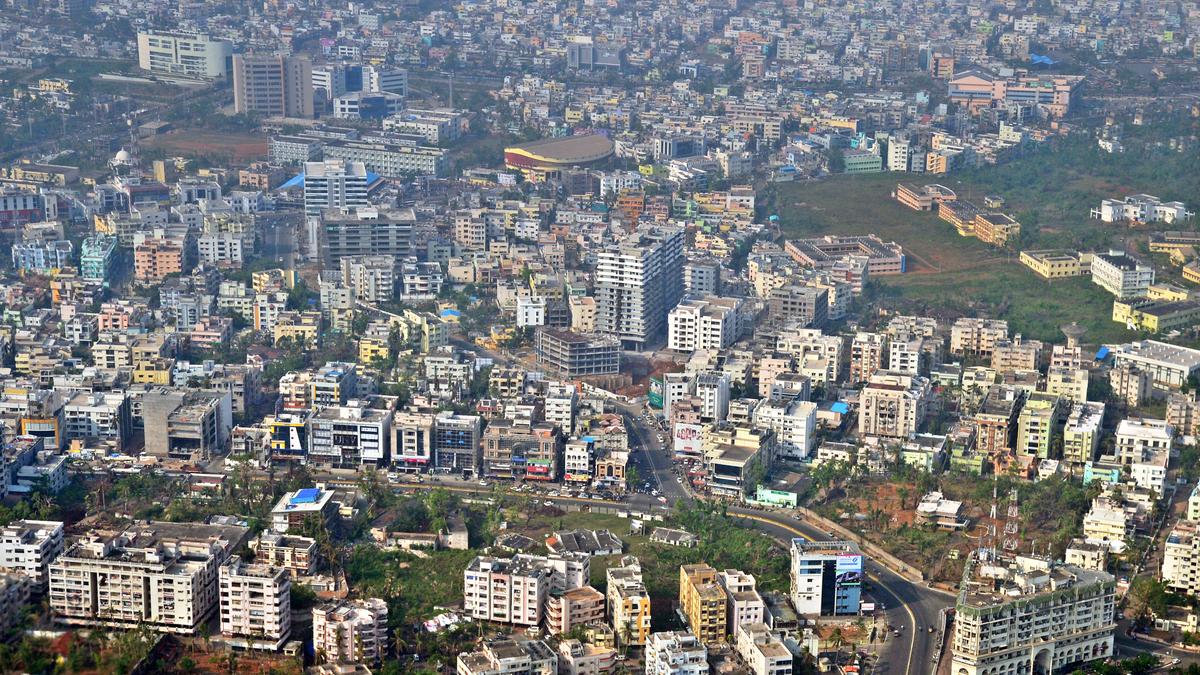‘Indian cities also struggle with low absorptive capacity, further complicating the urban infrastructure landscape’ File
| Photo Credit: The Hindu
India’s urban population will increase from 400 million in the last decade to 800 million over the next three decades. While this offers an opportunity to transform India’s urban landscape, there are significant financial challenges that must be overcome to get there. A recent World Bank report estimates that India will require about ₹70 lakh crore by 2036 to meet its urban infrastructure needs. Current government investment (2018 figures) in urban infrastructure stands at around ₹1.3 lakh crore annually. This is just a little over one-fourth of the required ₹4.6 lakh crore per year. Broadly, about 50% is estimated for basic urban services, with the other half for urban transport.
Issues at the local level
Municipal finances, a crucial component of urban infrastructure funding, have remained stagnant for decades. Since 2002, municipal finance has stayed at just 1% of GDP. Municipal bodies contribute 45% of urban investments, while the remainder is managed by parastatal agencies. Despite an increase in central and State transfers from 37% to 44%, the financial health of municipalities remains precarious. Tax revenue grew by only 8% between 2010 and 2018, grants by 14%, and non-tax revenue by 10.5%. However, the share of municipalities’ own revenue sources has declined from 51% to 43%, reflecting a diminishing capacity for self-sufficiency.
Collection inefficiencies also exist in urban local bodies (ULB). For instance, data from 2017-18 reveals that ULBs in Bengaluru and Jaipur collect only 5%-20% of their potential tax revenue. Nationwide, property tax collection stands at a paltry ₹25,000 crore, which is only 0.15% of GDP. Further, cost recovery for services ranges from 20% to 50%, highlighting the significant gap between the costs of urban services and the revenues generated from them.
Indian cities also struggle with low absorptive capacity, further complicating the urban infrastructure landscape. According to the Fifteenth Finance Commission report, about 23% of total municipal revenue remains unspent, indicating a surplus in the municipal system that is not being effectively utilised. Even major cities such as Hyderabad and Chennai only managed to spend 50% of their capital expenditure budgets in 2018-19. The utilisation of central scheme funds also leaves much to be desired, with the Atal Mission for Rejuvenation and Urban Transformation (AMRUT) achieving 80% utilisation and the Smart Cities Mission reaching 70%.
Public-private partnerships (PPPs), another crucial avenue for urban infrastructure financing, have seen a marked decline over the past decade. PPP investments in urban infrastructure peaked at ₹8,353 crore in 2012 but plummeted to just ₹467 crore by 2018. The viability of PPP projects is often dependent on the availability of payments or viability funding for ensuring bankability; but due to the lack of project-specific revenues, these projects further diminish commercial attractiveness.
The next step is reform
Given the myriad of financial challenges outlined, it is imperative to adopt a dual-pronged approach with specific long-term and medium-term measures. In the long term, carrying out structural reform would be critical. These reforms should include strengthening State finance commissions to enhancing autonomy and capacity for better financial management at the municipal level. Additionally, empowering municipal governments with greater financial and administrative autonomy will be critical in enabling them to manage and allocate resources more effectively for urban development. This can then attract the much-needed private capital, through mechanisms such as debt borrowing, and municipal bonds.
In the medium term, the following measures can significantly transform the development of sustainable urban infrastructure.
First, develop a robust pipeline of projects. The High-Powered Expert Committee and 12th Plan Working Group have developed a financing framework to meet the ₹70 lakh crore urban infrastructure investment requirement over the next 20 years. About 15% of this total investment could potentially come through PPPs, translating to roughly 250-300 PPP projects annually. To achieve this, a pipeline of 600-800 projects must be in place.
Second, decouple project preparation from financial assistance. The last two decades have shown that investments in urban infrastructure have not advanced to the extent required, often due to hurried project preparation. As new national programmes are conceived, it is essential to decouple project preparation from financial assistance. Ensuring that these projects are designed for financial, social, and environmental sustainability is vital, especially given India’s vulnerability to climate change.
Third, leverage Digital Public Infrastructure (DPI) for improved operations. Urban service delivery, particularly in public transport, remains hampered by outdated practices. Embracing DPI can revolutionise the management and the operation of public services, positioning India as a global leader in this domain.
Fourth, capture land value in transport projects. With half of the ₹70 lakh crore investment by 2036 earmarked for urban transport, particularly metro rail projects, there is a unique opportunity to harness land value. Metro and rail projects should be integrated with urban development, ensuring that they bring jobs closer to transit hubs and contribute to the overall efficiency and design of cities.
The need for collaboration
To conclude, India’s urban future hinges on the ability to address these financial and structural challenges head-on. The stakes are high, and this is the window for action. By pursuing both immediate and long-term strategies, India can build urban infrastructure that meets the demands of its growing cities, thus ensuring sustainable and inclusive development for the decades to come. The path forward will require collaboration across government levels, private sector participation, and a relentless focus on innovation and governance efficiency.
Madhav Pai is Chief Executive Officer, WRI India. The views expressed are personal
Published – November 25, 2024 12:08 am IST
